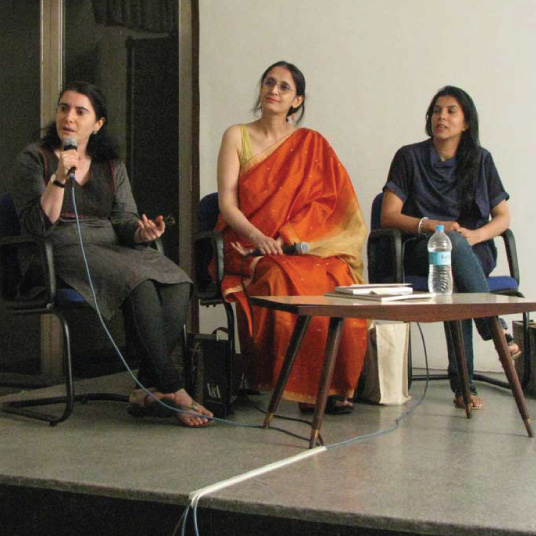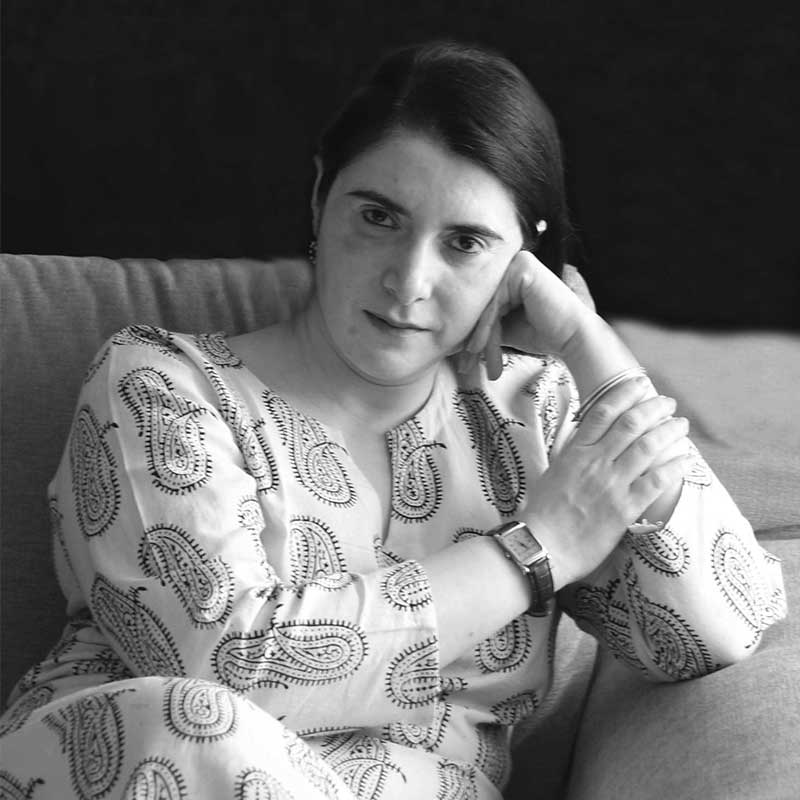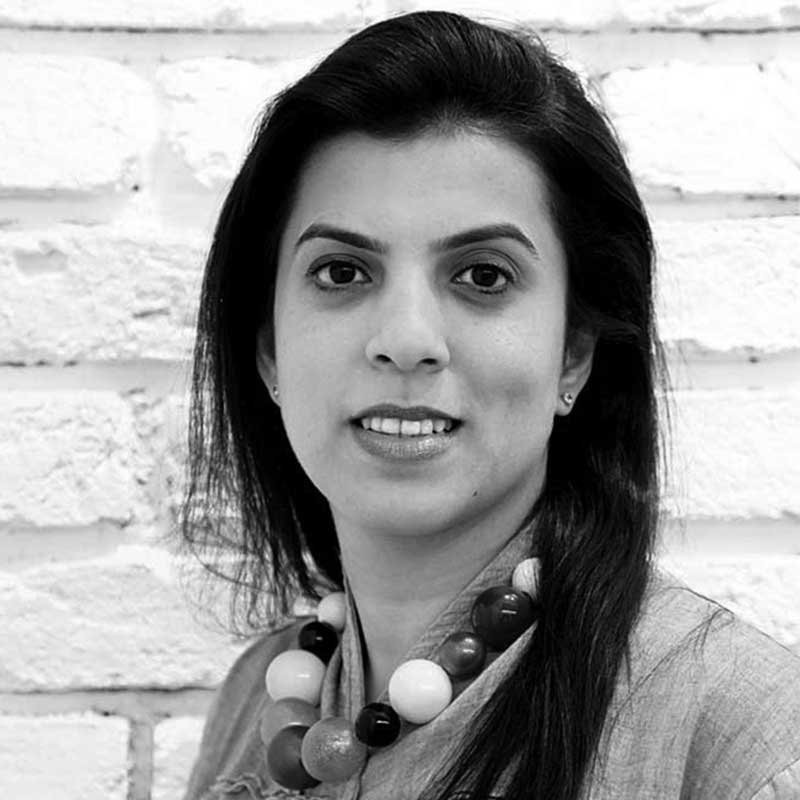
Artists Anju Dodiya and Reena Kallat were in conversation with cultural theorist Nancy Adajania. The panel provoked a debate on the value of interpreting artists in terms of gender, the historical place of gender politics in contemporary art, and whether there has been a generational shift in perspective from the women artists whose work Jehangir Nicholson collected between the 1970s and the 1990s, and those of today.
This programme was part of the series of events planned around the exhibition “Voicing a presence: Women artists in the Jehangir Nicholson collection".

Anju Dodiya was born in Bombay in 1964. She graduated from the J.J. School of Art in 1986 with a BFA in Painting.
Dodiya’s early works were abstract, but following her first show, ‘A Fictional Autobiography,’ she tried to refocus her gaze on railway stations, roadside scenes and so forth. Ultimately, however, she found her original impulse of a painterly introspection as her strongest inspiration and re-channelled her vision into describing situations from her own life.
She creates expressive watercolours layered with images and symbolism. Rooted in the figurative, Dodiya draws inspiration from a range of artists including poet Sylvia Plath, filmmaker Ingmar Bergman, and early Renaissance masters Piero della Francesca and Giotto. Bold patterns and vivid colours of medieval French tapestries and Japanese woodblock prints also influence her works. Often autobiographical, her works reveal her interest in self-reflection and the process of self-discovery. Dodiya does this primarily through painting, however, has also created intricate installations involving embroidered mattresses and shards of broken mirror.
The majority of her works allow the viewer to visualise the private thoughts and moments which someone experiences when they are alone. Dodiya’s self is a recurring theme in each context. These are inward looking investigations with a keen sense of self-awareness. Her works compel the viewer to unravel stories of the female protagonists, yet they don’t reveal the full narrative. Dodiya also creates her own legends that are often self-disruptive autobiographies.
Dodiya’s works have been exhibited both in India and internationally, including the Frieze international art fair, Art Basel, and India Art Fair. She also has numerous works in private and public collections including the National Gallery of Modern Art, New Delhi; Chemould Prescott Road, Bombay; and the Art Institute of Chicago. Dodiya has also been the recipient of a number of awards such as the Zee Existence Award (2007); the Reliance India Art Exhibition Award for Harmony (1999); and she was nominated twice for the Sotheby’s Prize for Contemporary Art (1998, 2000). She lives and works in Bombay.

Nancy Adajania is a cultural theorist and independent curator based in Mumbai. She was joint artistic director of the 9th Gwangju Biennale, 2012, and is a contributor to the FORMER WEST research, conference and exhibition project.
Adajania has written and lectured extensively on art and the public sphere, and transcultural art practices all over the world. Her latest book, ‘The Thirteenth Place: Positionality as Critique in the Art of Navjot Altaf’, was published in 2016. She has curated a number of exhibitions, most recently ‘No Parsi is an Island’ at the National Gallery of Modern Art, New Delhi in 2016. Adajania is the editor of the monograph Shilpa Gupta in 2010 and co-author of The Dialogues Series in 2011. She was research scholar-in-residence at BAK/ basis voor actuele kunst, Utrecht, 2010 and 2013. Adajania is a member of the faculty for the Art Criticism and Theory Course at Jnanapravaha, Mumbai.

Reena Kallat is a one of India’s most important contemporary artists. Her practice spans drawing, photography, sculpture and video and engages diverse materials, imbued with conceptual underpinnings. She is interested in the role that memory plays, not only what we choose to remember but also how we think of the past. All her works reflect the constant shifts beween building and collapsing movements like of birth, death and rebirth. Some of her motifs are the rubberstamp, electric cables and salt as a medium. She has widely exhibited at institutions in India and across the world. She has exhibited her works all over the country and the world, and has her works in various private and public collections.